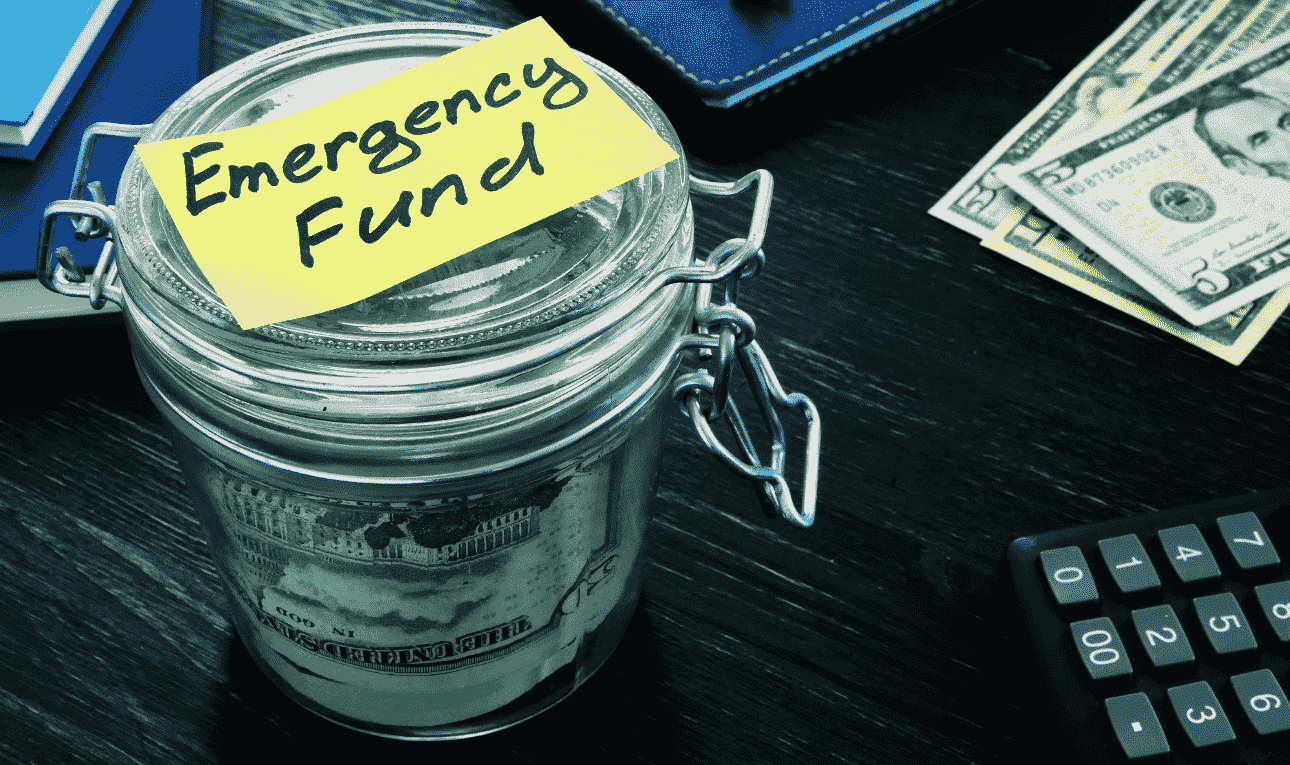The Federal Reserve’s data reveal that U.S. households collectively possess $160.35 trillion in wealth, yet many face financial insecurity. Achieving financial stability hinges on understanding and effectively managing monthly living expenses.
Initiating the process of calculating your expenses is fundamental to establishing a robust emergency fund. This step allows for the identification of areas ripe for budget adjustments, facilitating more efficient resource allocation. Through effective budget planning, one can prepare for unforeseen expenses, bolstering resilience against financial shocks.
Key Takeaways
- Understanding your monthly expenses is critical for financial planning.
- An emergency fund is essential for managing unexpected expenses.
- Effective budget planning is vital for financial stability.
- Calculating your living expenses aids in identifying cost-cutting opportunities.
- A well-planned emergency fund can significantly reduce financial stress.
Understanding Monthly Living Expenses
To adeptly manage your financial resources, it is imperative to possess a profound comprehension of your monthly living expenses. These expenditures comprise all the indispensable outlays necessary to uphold your lifestyle. They serve as the cornerstone in determining the requisite savings for an emergency fund.
Insights from the Federal Reserve data reveal the significance of wealth distribution among U.S. households in personal financial management. Monthly living expenses include rent or mortgage payments, utilities, groceries, transportation costs, and minimum debt payments. These are fundamental in ascertaining the financial safety net’s magnitude.
The utilization of a cost of living calculator facilitates the comprehension of your expenses in relation to your peers. This tool offers valuable insights into the alignment of your spending habits with local standards, aiding in the identification of areas for cost reduction. Concurrently, an expense tracking tool enables precise monitoring of expenditures, facilitating adherence to budgetary constraints.
Through the categorization of expenses and the elucidation of financial outflows, you can make strategic decisions regarding your financial priorities. This understanding is critical for constructing a substantial emergency fund, capable of covering several months of living expenses in the face of unforeseen events.
Categorizing Your Expenses
To forge a robust budget, categorizing expenses with precision is imperative. This process, a cornerstone of budget planning, elucidates the destinations of your financial resources. By compartmentalizing expenditures into distinct categories, you enhance your fiscal management capabilities and empower yourself with informed decision-making.
The tripartite division of expenses—fixed, variable, and discretionary—constitutes a fundamental framework for financial management strategies. Mastery over these categories is essential for optimizing your financial landscape.
- Fixed Expenses: These are expenditures that persist unchanged monthly, encompassing rent, mortgage payments, and insurance premiums.
- Variable Expenses: These costs fluctuate from month to month, including groceries, utility bills, and fuel expenditures.
- Discretionary Spending: This category comprises non-essential outlays, such as dining out, entertainment, and hobbies.
Financial sage Dave Ramsey posits, “A budget is telling your money where to go instead of wondering where it went.” The act of categorizing expenses is a step towards achieving this fiscal clarity.
“A budget is telling your money where to go instead of wondering where it went.”
Utilizing a table format can simplify the categorization of expenses. Below is an illustrative example:
| Expense Category | Examples | Monthly Cost |
|---|---|---|
| Fixed Expenses | Rent, Mortgage, Insurance | $1,500 |
| Variable Expenses | Groceries, Utilities, Fuel | $800 |
| Discretionary Spending | Dining Out, Entertainment, Hobbies | $300 |
Through the categorization of expenses and the comprehension of your spending patterns, you can devise effective monthly budgeting tips. This will, in turn, bolster your overall financial well-being.
Calculating Fixed Expenses
To effectively manage your finances, it is imperative to identify and calculate your fixed expenses. These are regular, non-discretionary costs that exhibit minimal variability from one month to the next. They are fundamental in determining your monthly living expenses and play a critical role in household budgeting techniques.
Fixed expenses typically encompass:
- Rent or mortgage payments
- Utility bills (electricity, water, gas, internet)
- Minimum credit card payments
- Insurance premiums (health, auto, home)
- Subscription services (streaming, software, memberships)
To calculate your fixed expenses, begin by compiling your financial documents, such as bank statements and bills. Record the amount you pay for each fixed expense and sum them up to determine your total monthly fixed expenses. For expenses that recur less frequently, such as quarterly insurance premiums, divide the total by the number of months to derive the monthly equivalent.
Saving money on monthly expenses often commences with a thorough understanding and management of your fixed expenses. While some fixed expenses are unavoidable, others may present opportunities for reduction. For example, you might reduce your utility bills by decreasing consumption or by negotiating a more favorable rate with service providers.
Tips for Managing Fixed Expenses
To effectively manage your fixed expenses, consider the following strategies:
- Regularly review your contracts and subscriptions to ensure you are receiving the best rates.
- Consolidate debts to lower interest rates and simplify payments.
- Negotiate with service providers for better deals.
By accurately calculating and managing your fixed expenses, you can establish a more realistic budget and make informed decisions regarding your financial resources. This step is vital in constructing a robust emergency fund and achieving long-term financial stability.
Estimating Variable Expenses
To construct a robust emergency fund, grasping and forecasting variable expenses is imperative. Variable expenses fluctuate monthly, encompassing items such as groceries, entertainment, and transportation costs. Precise forecasting of these expenses is vital for the formulation of a realistic monthly budget.
Tracking your expenditures over several months is an effective method for estimating variable expenses. This approach yields a detailed understanding of your average monthly outlays across various categories. For example, grocery bills can significantly vary due to sales, seasonal fluctuations, or personal dietary preferences.
Another strategy involves categorizing variable expenses. Common categories include:
- Groceries and dining out
- Entertainment (movies, concerts, hobbies)
- Transportation (gas, maintenance, public transport)
- Personal care (salon services, beauty products)
By delineating these categories, you can more accurately forecast your monthly expenses. For instance, anticipating increased entertainment costs during the holiday season allows for budget adjustments.
For a clearer comprehension, let’s examine a comparison of average variable expenses:
| Category | Average Monthly Cost | Range |
|---|---|---|
| Groceries | $500 | $300 – $700 |
| Entertainment | $200 | $100 – $300 |
| Transportation | $300 | $150 – $500 |
The table illustrates the importance of having a cost range for variable expenses. This range is essential for budgeting during months with higher-than-average costs, ensuring financial stability.
To enhance your forecasting, leverage historical data and trends. For example, if utility bills consistently rise in winter, incorporate this into your budgetary planning.
Assessing Discretionary Spending
To establish a solid financial base, a thorough examination of discretionary spending habits is imperative. Discretionary spending encompasses non-essential expenditures, such as dining out, entertainment, and hobbies. This evaluation is critical, as these expenses can profoundly influence one’s capacity to accumulate savings for an emergency fund.
Implementing financial management strategies necessitates a meticulous monitoring of discretionary spending to pinpoint areas for cost reduction. Such an approach enables individuals to redirect funds towards savings and emergency reserves. For example, curtailing dining out frequency or canceling unused subscription services can liberate substantial monthly funds.
Adopting a budget that distinguishes discretionary from essential expenses is a practical strategy for saving money on monthly expenses. This differentiation facilitates more informed decisions regarding where to trim back. Practices like home cooking, exploring free entertainment, and shopping during sales can markedly diminish discretionary outlays.
Regularly reassessing and adjusting discretionary spending habits is also advantageous. As financial circumstances evolve, what was once considered discretionary may require reevaluation. For instance, during times of financial adversity, scaling back discretionary spending can provide a critical financial safety net.
By grasping and effectively managing discretionary spending, individuals can bolster their financial stability and hasten their savings objectives. This proactive stance towards financial management not only fortifies emergency funds but also fosters long-term financial well-being.
Adding Up Your Monthly Total
Accurately calculating your monthly expenses is imperative for financial acumen. This necessitates aggregating all categorized expenses.
Initially, we must revisit the various expense categories. These include fixed expenses, such as rent, utilities, and minimum debt payments. Variable expenses encompass groceries, transportation, and entertainment. Lastly, discretionary spending pertains to non-essential expenditures, like dining out or hobbies.
For illustrative purposes, let’s consider an example. Suppose your fixed expenses amount to $2,000, variable expenses to $1,500, and discretionary spending to $500. This would equate to a total monthly expenditure of $4,000.
| Expense Category | Monthly Amount |
|---|---|
| Fixed Expenses | $2,000 |
| Variable Expenses | $1,500 |
| Discretionary Spending | $500 |
| Total Monthly Expenses | $4,000 |
Employing an expense tracking tool can streamline this process. Such tools facilitate monitoring of expenditures, pinpointing areas for reduction, and ensuring adherence to budgetary constraints.
Grasping your total monthly expenses is fundamental for effective budget planning and informed financial decision-making. This step is indispensable for establishing an emergency fund and securing long-term financial stability.
Building Your Emergency Fund
An emergency fund serves as a critical financial safeguard, ensuring stability and peace of mind during unforeseen economic disruptions. To effectively construct this fund, it is imperative to grasp the significance of saving money on monthly expenses and to adopt robust financial management strategies.
Initiate by designating a segment of your income towards your emergency reserve. The objective should be to accumulate 3-6 months’ worth of living costs. This fund will serve as a protective barrier against unforeseen expenses, such as vehicular repairs or medical emergencies, preventing the need for debt.
To expedite your savings, consider automating your transfers to your savings account. A thorough examination of your budget can also reveal opportunities to reduce discretionary spending, redirecting those savings towards your emergency fund.
By prioritizing the establishment of an emergency fund, you enhance your capacity to navigate through financial uncertainties, ultimately securing long-term financial stability.
Adjusting for Income Changes
Income fluctuations necessitate a recalibration of financial planning, mandating adjustments to your budget. Such changes, whether precipitated by a job transition, promotion, or a reduction in working hours, necessitate a reevaluation of monthly living expenses and emergency fund allocations.
Understanding the Impact of Income Changes
Income variations significantly influence your capacity for savings and budgeting. An uptick in income may facilitate enhanced savings or discretionary expenditures, whereas a decline necessitates a recalibration of expenses to preserve financial equilibrium.
- Review your current budget to identify areas where adjustments can be made.
- Consider how changes in income will impact your emergency fund contributions.
- Adjust your discretionary spending based on your new income level.
Budgeting Tips for Variable Income
For those with variable income, budgeting presents a unique challenge. Effective financial management can be achieved through the following strategies:
- Prioritize essential expenses, such as rent/mortgage, utilities, and groceries.
- Adopt the 50/30/20 rule as a guideline: 50% for necessities, 30% for discretionary spending, and 20% for saving and debt repayment.
- Adjust your emergency fund target based on your income stability.
Proactive adjustments to your budget in response to income fluctuations are essential for maintaining financial stability. This approach enables continued progress towards long-term financial objectives.
Reviewing and Adjusting Your Expenses
Maintaining fiscal discipline requires a continuous evaluation and refinement of one’s expenditure patterns. The cornerstone of financial management strategies lies not merely in the tracking of outlays but in the proactive adjustment of these to ensure congruence with fiscal objectives.
Initiate the expense review process by segmenting expenditures into fixed, variable, and discretionary categories. This household budgeting technique facilitates a clear comprehension of expenditure distribution, enabling the pinpointing of avenues for cost reduction.
- Fixed expenses encompass rent, utilities, and the minimum payments on outstanding debts.
- Variable expenses comprise groceries, entertainment, and travel.
- Discretionary spending pertains to non-essential items, such as dining out or the acquisition of luxury goods.
Through the consistent reviewing of expenses, one can discern patterns and irregularities, empowering the formulation of strategic decisions regarding expenditure allocation. This exercise is indispensable for the preservation of an adequate emergency fund and the attainment of enduring financial equilibrium.
Consideration of several financial management strategies is imperative during the review phase:
- Revision of the budget to reflect alterations in income or expenditure.
- Identification of opportunities for reduction in discretionary spending.
- Reallocation of surplus funds towards savings or debt repayment.
Adoption of these strategies and the regular scrutiny of expenses ensure the continued alignment of your financial blueprint with your objectives.
Setting Financial Goals
Embarking on the journey of setting financial goals is an indispensable step in the effective management of monthly living expenses. By delineating clear objectives, one can more adeptly allocate income towards necessary expenses and savings. This strategic approach facilitates a more streamlined financial landscape.
Financial goals serve as a guiding framework for prioritizing expenditures, ensuring a sufficient allocation for essential expenses, and cultivating a robust emergency fund. To establish attainable goals, a thorough examination of one’s income, fixed expenses, and variable costs is imperative.
Key Considerations for Setting Financial Goals:
- Assess your current financial situation
- Identify short-term and long-term objectives
- Prioritize needs over wants
- Create a budget plan that aligns with your goals
Through this process, one can make informed financial decisions, ultimately achieving financial stability. For example, if the objective is to accumulate an emergency fund, discretionary spending may need to be curtailed.
Effective financial planning necessitates the regular review and adjustment of goals in response to changes in one’s financial situation. This ensures continued alignment with objectives.
Consider an individual aiming to save $10,000 for an emergency fund within a year. They would need to allocate approximately $833 monthly, necessitating a corresponding adjustment in their budget.
Common Mistakes to Avoid
Accurate emergency fund planning necessitates the avoidance of common mistakes in the calculation of monthly living expenses. Many individuals commit critical errors in determining their monthly expenses, which can severely impact their financial stability.
One of the most critical financial management strategies involves the correct identification and categorization of expenses. Failure to do so can result in either underestimation or overestimation of monthly expenses.
- Not accounting for irregular expenses, such as car maintenance or property taxes.
- Failing to adjust for changes in income or expenses.
- Overlooking discretionary spending that can be adjusted.
To save money on monthly expenses, it is imperative to accurately estimate variable expenses, such as groceries and entertainment. The creation of a detailed budget facilitates the identification of areas where costs can be reduced.
| Expense Category | Average Monthly Cost | Potential Savings |
|---|---|---|
| Groceries | $500 | $100 |
| Entertainment | $300 | $150 |
| Transportation | $200 | $50 |
By eschewing these common mistakes and implementing effective financial management strategies, individuals can better manage their finances and construct a robust emergency fund.
Regularly reviewing and adjusting monthly expenses is essential for maintaining financial health. By being vigilant of these pitfalls and taking proactive measures, individuals can ensure they are adequately prepared for financial challenges.
Resources for Financial Planning

To navigate the complexities of personal finance, leveraging the right resources is essential. Effective financial planning involves utilizing various tools and services that can help in managing monthly living expenses and building a robust emergency fund.
One of the key resources for financial planning is a cost of living calculator. This tool allows individuals to assess the cost of living in different regions and adjust their financial plans. By understanding the cost of living, individuals can make informed decisions about their expenses and savings.
Another critical resource is an expense tracking tool. These tools help individuals monitor their spending, categorize expenses, and identify areas where they can cut back. By keeping track of expenses, individuals can create a more accurate budget and make adjustments to achieve their financial goals.
Here are some additional resources that can aid in financial planning:
- Budgeting apps that offer personalized financial advice
- Financial planning software that helps in creating detailed financial plans
- Online forums and communities where individuals can share their experiences and gain insights from others
By utilizing these financial planning resources, individuals can take control of their finances, make informed decisions, and achieve their financial goals.
Conclusion: Taking Control of Your Finances
Effective managing finances commences with a thorough comprehension of monthly living expenses and the establishment of a substantial emergency fund. By delineating expenses into fixed, variable, and discretionary categories, one can precisely determine the monthly total, facilitating informed financial choices.
To assert control over finances, it is advisable to engage in regular budget reviews and adjustments in response to income or expense fluctuations. This proactive stance towards budget planning aids in maintaining alignment with financial objectives and necessitates timely adjustments.
Adopting successful monthly budgeting tips involves several strategies: automate savings, prioritize essential needs over discretionary wants, and vigilantly monitor expenses. Such actions empower individuals to navigate financial uncertainty and strive towards enduring stability.
Adherence to these principles and a steadfast commitment to financial planning are essential for securing a more stable financial future. Initiate the construction of your emergency fund immediately, marking the commencement of your journey towards realizing your financial aspirations.







